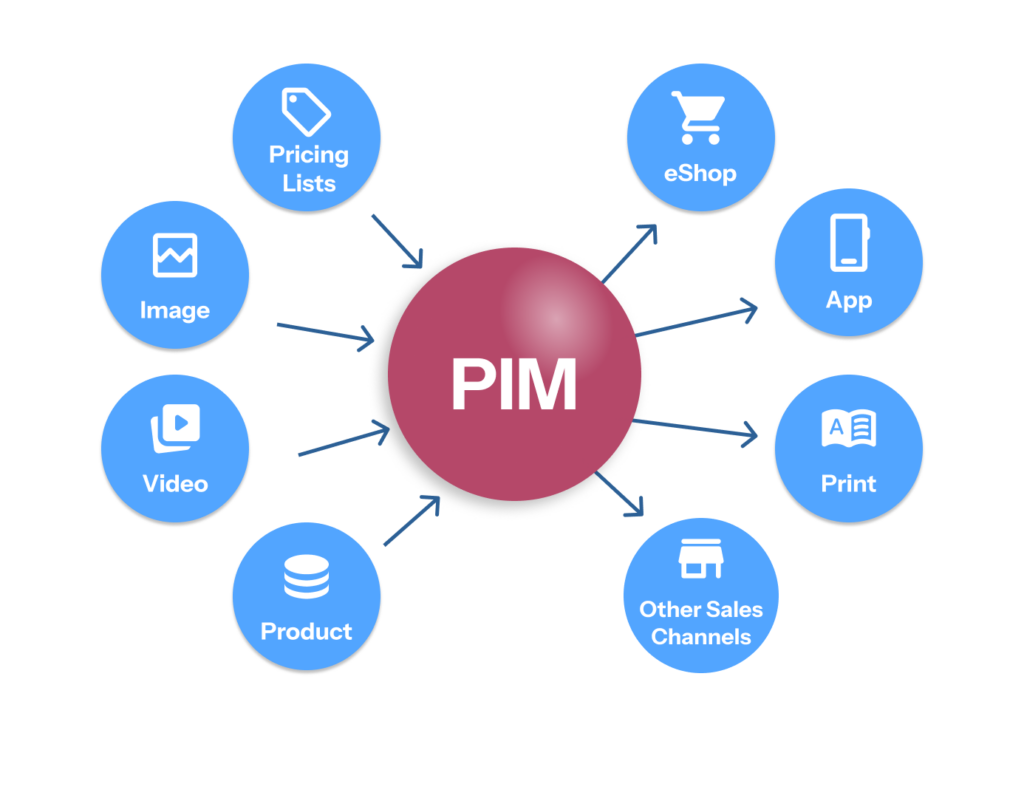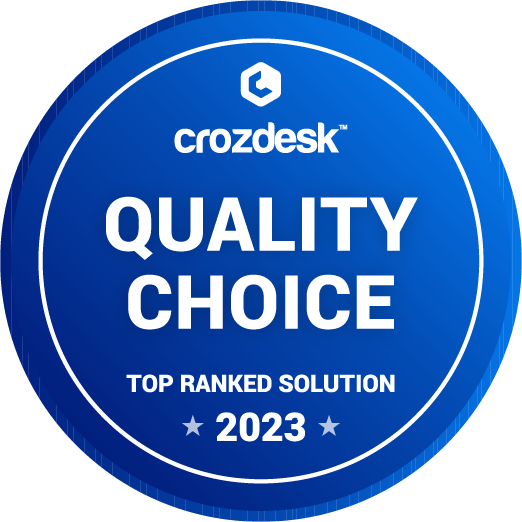Everything eCommerce Companies Need To Know About PIM
Do you sell hundreds or thousands of products? Across multiple channels? Then you already know how hard it is to keep product information accurate, organized, and error-free. One wrong image and the product won’t go live. Inaccurate availability? Unhappy customers. Price change? Here we go again.
That’s exactly why PIM (Product Information Management) systems exist. They’re built to eliminate these problems by serving as a central hub where all your product data is created, edited, approved, and published – from technical specs to eCommerce descriptions.
With a PIM, everything is in one place: SKUs, names, dimensions, materials, images, descriptions, prices, availability…you name it. Not only that – everything is formatted and ready to be distributed wherever it needs to go: your online store, marketplaces, or partners.
What is a PIM System?
PIM (Product Information Management) is a system designed to manage product data. It helps businesses maintain order across teams, processes, and sales channels.
While ERP handles logistics, orders, and billing, and MDM manages core data across the entire company, PIM focuses purely on what your customers see – the product content that drives sales.
PIM is where enriched product content is born – descriptions, images, specs, attachments. It enables fast growth, multichannel scaling, and seamless product listings without chaos.
How PIM Differs from Other Systems
PIM vs. ERP
ERP is the brain of operations – managing logistics, finances, and inventory. But when it comes to product content, marketing data, copywriting, or localization, it falls short.
PIM, on the other hand, handles everything visible to the customer – ensuring content is consistent, attractive, and delivered exactly where and how it should be.
PIM vs. MDM
MDM manages all core data – customers, suppliers, products, processes – across the organization. It’s great for centralized management and connectivity. But PIM is more focused: it zeroes in on product content and multichannel presentation. It’s built for the people responsible for product offers – not the company’s entire data architecture.
How a PIM System Works
1. Collecting and Importing Data
It all starts with importing your product data – whether from Excel files, ERP, suppliers, or other systems. This can be automated or manual. The result? A single, centralized place with everything you know about your products.
2. Enrichment, Categorization, Localization
Next, you can enrich your data – fill in missing specs, descriptions, photos, manuals. Assign products to categories, set units, translate texts. Everything to ensure customers can find what they need and understand it clearly.
Pro tip: Some PIMs automate these tasks, saving time and reducing manual work. You just review the results.
3. Validation and Approval
PIM systems can monitor data quality – what’s missing, duplicated, or incorrectly formatted. When something’s off, they’ll notify you. Larger teams can use approval workflows to ensure every product goes live only when it’s fully ready.
4. Distribution Across Sales Channels
Once your data is complete, the PIM distributes it to all your channels – webshops, marketplaces, etc. Each channel gets the data in the format it requires. Automatically. That’s multichannel product management in action.
5. Automation and Optional AI Support
Want to save more time? Set up rules in your PIM to automate repetitive steps – from product listing to enrichment and publishing. You can even integrate AI to generate descriptions or fill in missing data from public sources. Not required – but a powerful time-saver if you want it.

What PIM Can Do – And Why You Need One
1. One Source of Truth
No more spreadsheets, scattered emails, or folder chaos. All product data lives in one organized place.
2. Reliable, Quality Data
PIM detects errors, flags missing info, and allows for validation. You ensure customers always see accurate data.
3. Faster Product Listings
PIM can automate data intake from suppliers. Just enrich the data and publish to all your channels with a click. What used to take days can now be done before lunch.
4. Scalable Without the Stress
Adding more products, suppliers, or markets? With automation, you don’t need to grow your team.
5. Multichannel Sales Without Confusion
Each marketplace has its own rules. PIM automatically adapts your data for each one.
6. Improved Customer Experience
Accurate info = fewer returns, more completed purchases. You can even include manuals or sizing guides.
7. Real-Time Pricing and Stock Updates
PIM responds to supplier changes – like restocks, price adjustments, or delistings – and updates the data instantly.
8. Easy Integration with Other Systems
PIM works well with your ERP, eCommerce platform, and marketplaces.
9. Less Stress, More Room to Grow
Automation frees your team to focus on strategy, innovation, and scaling.
How WisePorter Stands Out from Other PIM Systems
1. Smart Pricing Without Coding
With WisePorter’s rule engine, you can define pricing logic without involving developers. Prices are calculated automatically based on costs, margins, discounts, or partner-specific terms.
2. Custom Product Structures
WisePorter isn’t limited to rigid templates like product–variant–attribute. You define your own logic – including bundles, configurators, add-on services, or anything else your business needs.
3. Full Product Lifecycle Management
WisePorter supports the entire product journey – from idea to approval to publication. Plan changes ahead, assign roles and workflows based on product status.
4. Automation Based on Your Rules
If you can describe it logically, WisePorter can automate it – like categorization, variant generation, file attachments, or price recalculations. Just define the rule.
Common Concerns – And Why You Don’t Need to Worry
“We already have an ERP – isn’t that enough?”
ERP is great for managing inventory, orders, and invoices. But when it comes to content, images, SEO, or localization – it usually falls short. PIM complements ERP – each does what it does best.
“Implementing a PIM is expensive and takes forever.”
Not necessarily. WisePorter is highly configurable and can be rolled out gradually. You don’t need every detail upfront – start with the essentials and evolve based on real needs. Faster results, lower costs, less risk.
“Our data isn’t ready yet.”
That’s all the more reason to get a PIM. It helps clean up your data – harmonize names, calculate missing values, standardize units. You don’t need to wait for perfection.
Summary: Why Give PIM a Chance
- Full control over your product data
- Faster, error-free listings
- Seamless multichannel scaling without hiring more staff
- Better product management and customer experience
- More time for what truly drives your business
All that – without the stress and chaos.




